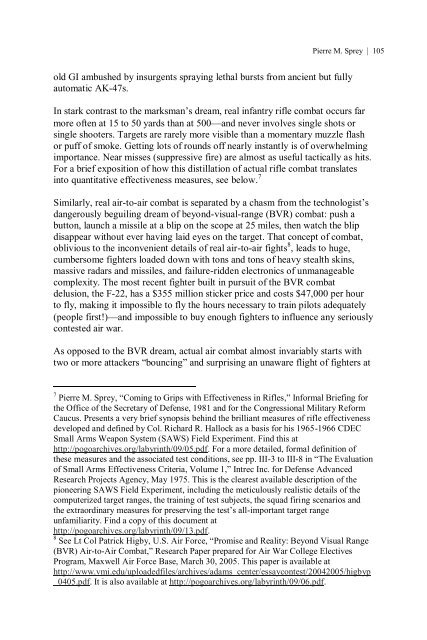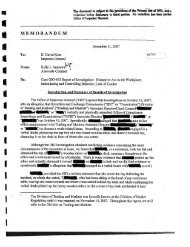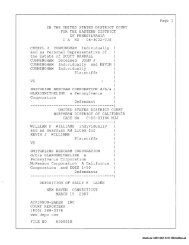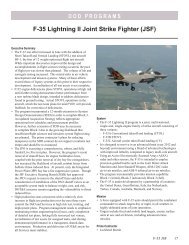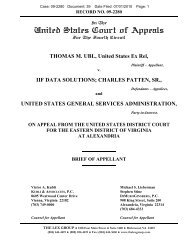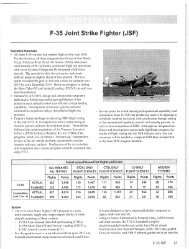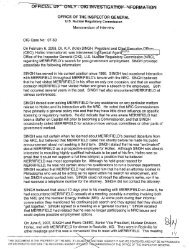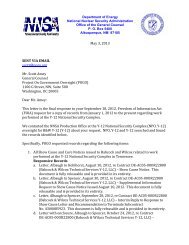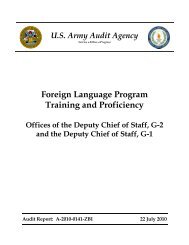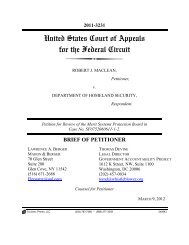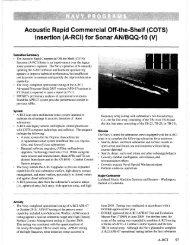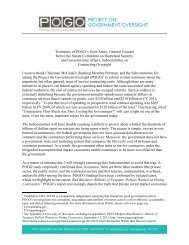The Pentagon Labyrinth
The Pentagon Labyrinth
The Pentagon Labyrinth
You also want an ePaper? Increase the reach of your titles
YUMPU automatically turns print PDFs into web optimized ePapers that Google loves.
Pierre M. Sprey | 105<br />
old GI ambushed by insurgents spraying lethal bursts from ancient but fully<br />
automatic AK-47s.<br />
In stark contrast to the marksman’s dream, real infantry rifle combat occurs far<br />
more often at 15 to 50 yards than at 500 and never involves single shots or<br />
single shooters. Targets are rarely more visible than a momentary muzzle flash<br />
or puff of smoke. Getting lots of rounds off nearly instantly is of overwhelming<br />
importance. Near misses (suppressive fire) are almost as useful tactically as hits.<br />
For a brief exposition of how this distillation of actual rifle combat translates<br />
into quantitative effectiveness measures, see below. 7<br />
Similarly, real air-to-air combat is separated by a chasm from the technologist’s<br />
dangerously beguiling dream of beyond-visual-range (BVR) combat: push a<br />
button, launch a missile at a blip on the scope at 25 miles, then watch the blip<br />
disappear without ever having laid eyes on the target. That concept of combat,<br />
oblivious to the inconvenient details of real air-to-air fights 8 , leads to huge,<br />
cumbersome fighters loaded down with tons and tons of heavy stealth skins,<br />
massive radars and missiles, and failure-ridden electronics of unmanageable<br />
complexity. <strong>The</strong> most recent fighter built in pursuit of the BVR combat<br />
delusion, the F-22, has a $355 million sticker price and costs $47,000 per hour<br />
to fly, making it impossible to fly the hours necessary to train pilots adequately<br />
(people first!) and impossible to buy enough fighters to influence any seriously<br />
contested air war.<br />
As opposed to the BVR dream, actual air combat almost invariably starts with<br />
two or more attackers “bouncing” and surprising an unaware flight of fighters at<br />
7 Pierre M. Sprey, “Coming to Grips with Effectiveness in Rifles,” Informal Briefing for<br />
the Office of the Secretary of Defense, 1981 and for the Congressional Military Reform<br />
Caucus. Presents a very brief synopsis behind the brilliant measures of rifle effectiveness<br />
developed and defined by Col. Richard R. Hallock as a basis for his 1965-1966 CDEC<br />
Small Arms Weapon System (SAWS) Field Experiment. Find this at<br />
http://pogoarchives.org/labyrinth/09/05.pdf. For a more detailed, formal definition of<br />
these measures and the associated test conditions, see pp. III-3 to III-8 in “<strong>The</strong> Evaluation<br />
of Small Arms Effectiveness Criteria, Volume 1,” Intrec Inc. for Defense Advanced<br />
Research Projects Agency, May 1975. This is the clearest available description of the<br />
pioneering SAWS Field Experiment, including the meticulously realistic details of the<br />
computerized target ranges, the training of test subjects, the squad firing scenarios and<br />
the extraordinary measures for preserving the test’s all-important target range<br />
unfamiliarity. Find a copy of this document at<br />
http://pogoarchives.org/labyrinth/09/13.pdf.<br />
8 See Lt Col Patrick Higby, U.S. Air Force, “Promise and Reality: Beyond Visual Range<br />
(BVR) Air-to-Air Combat,” Research Paper prepared for Air War College Electives<br />
Program, Maxwell Air Force Base, March 30, 2005. This paper is available at<br />
http://www.vmi.edu/uploadedfiles/archives/adams_center/essaycontest/20042005/higbyp<br />
_0405.pdf. It is also available at http://pogoarchives.org/labyrinth/09/06.pdf.


